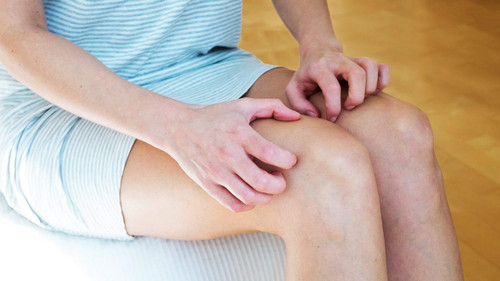How Skincare Can Ease Chafing
Posted by Jack Miller on 9th Dec 2020
Chafing is known as the uncomfortable rubbing together of ones thighs, or the friction between your skin and an article of clothing, like a shoulder and bra. This repetitive friction can break down the skin, and cause redness, irritation, and inflammation. Below we outline some skincare tips that will help aid your body in chafing treatment.
The spectrum of chafing can refer to anything from the friction between skin and clothing, to welts, rashes and blisters, occurring anywhere from your underarms to your thighs or buttocks. It's common in skin folds where sweat gets trapped, especially if your wearing clothes that trap moisture and mitigate friction. Opt for moisture-wicking clothes like those made with synthetic fibres and smooth seams.
Skincare tips to ease the uncomfortable effects of chafing:
Moisturise
Moisturise your inner thighs and the surrounding area to replace oils naturally lost in daily activity. Applying balms or creams to the areas prone to chafing, like zinc oxide, can protect the skin from friction. The moisturising effects in home remedies, like aloe vera, coconut oil, and shea butter may also prove to be effective. Additionally, apply a restorative ointment before bed, or even a simple baby’s diaper rash cream. It’ll soak into the skin overnight, and leave you with soft skin that’s less prone to friction and chafing rash.
Use fragrance-free products
Hold off on applying the scented lotions, soaps, or products with active ingredients, like glycolic acid. Wash and gently pat the area dry, using an unscented cleanser rinsed with water. Using natural products, like the aforementioned aloe vera or shea butter will help keep you dry and reduce friction. If your skin is blistered or has any open sores, using petroleum jelly may be an option, as it reduces friction and prevents abrasion, it is not a chafing cure but it can certainly aid in prevention. Gently clean the area with water, and dry thoroughly before applying petroleum jelly. However, if too painful, swollen, bleeding, or crusted, its best to consult your health care provider or a general practitioner to recommend a medicated ointment.
Prioritise cleanliness
Keeping your clothes and undergarments on all day can also cause us to retain extra moisture, sweat, and can become a breeding ground for unhealthy bacteria. By keeping skin and clothes clean by washing regularly with mild soap, you can reduce chafing. Wash your inflamed areas with a gentle, unscented wash and lukewarm water to soothe irritation from dried sweat. Pat dry, and air out the inflamed skin to ensure it’s dry, and not damp.
Try antifungals
Consider using an anti-fungal powder or antifungal cream as further protection against infections triggered by chafing. While the antifungal powder wicks away moisture and prevents infections borne from chafing, avoid putting it on around moist, sensitive orifices, such as the vagina. Always read product labels carefully.
If your skin chafing does not improve after home remedies and skincare, the continued friction could leave you prone to infection. Make an appointment to see your doctor.

